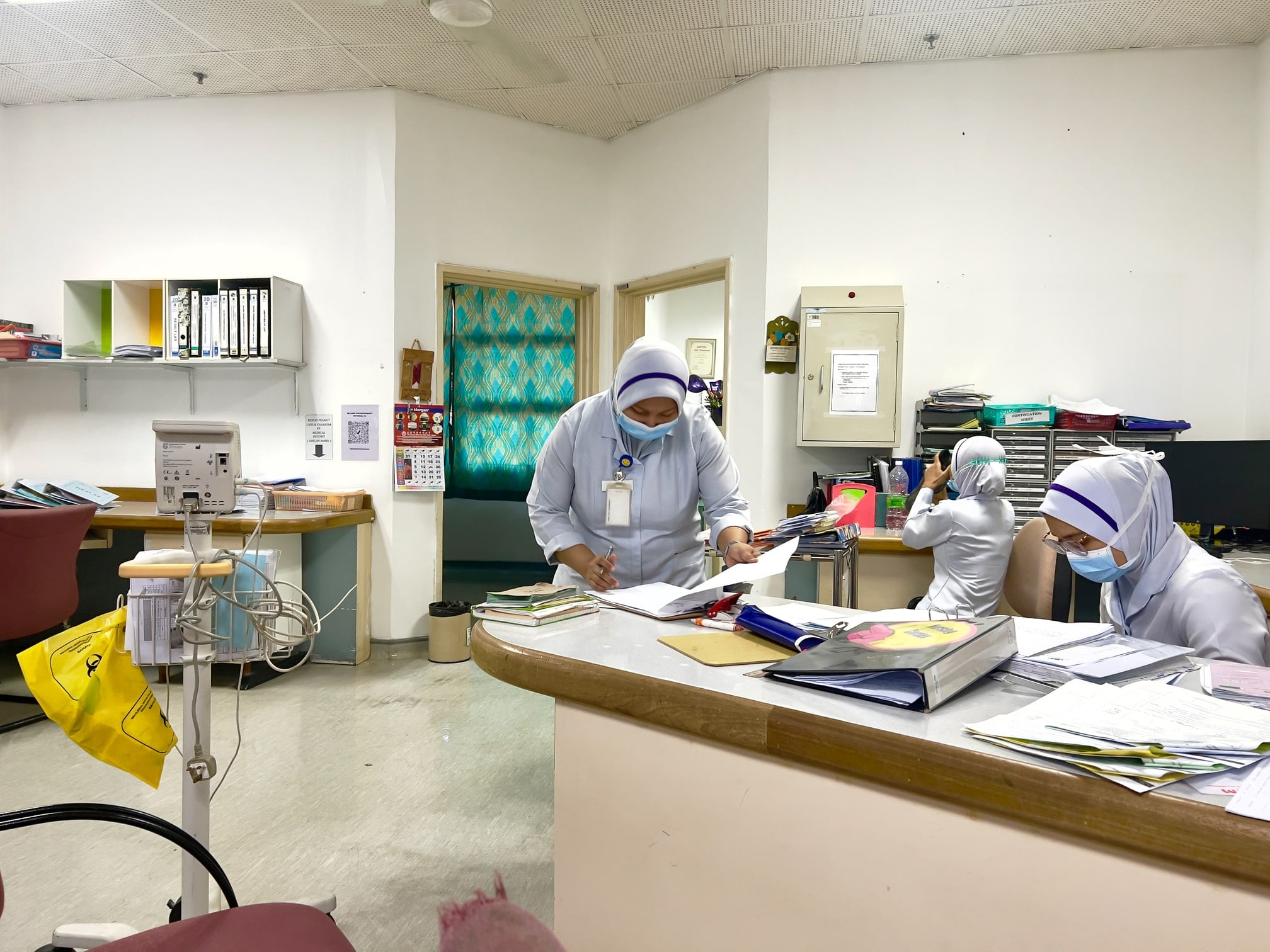KUALA LUMPUR, Jan 9 – The Ministry of Health (MOH) should consider hiring foreign-trained nurses to tackle the current critical nursing shortage in government hospitals, said a senior nurse.
Senior nurse Kevin (pseudonym) — who previously trained and worked at a teaching hospital in Kuala Lumpur and is currently serving at a private university — said that the MOH had a history of employing foreign nurses from countries like Vietnam and India in the mid-90s (circa 1995 to 1996) to cope with the nursing shortage at the time.
“It has happened before. The MOH used the same mechanism that private hospitals used to hire trained nurses from Commonwealth countries because they follow similar standards and framework as we do in Malaysia.
“MOH can consider doing this again. I don’t think there will be any issues with local nurses. Foreign nurses tend to be very disciplined and are well-trained professionals. I believe their addition will be welcomed,” Kevin told CodeBlue on condition of anonymity last Friday.
CodeBlue yesterday reported MOH’s goal to relocate “100 per cent” of nurses from specialist clinics – excluding those in clinical areas like obstetrics and gynaecology (O&G) and paediatrics – to wards amid an acute shortage of nurses in government hospitals. Nurses in clinics would instead be replaced by medical assistants, according to documents from Health director-general Dr Muhammad Radzi Abu Hassan’s meeting last November 27 with the MOH’s medical assistance services branch and the nursing division.
The MOH’s move to “optimise” nursing human resources in its hospitals was driven by both the nurses’ shortage — characterised by the Health DG’s meeting as currently having a “significant impact” — as well as insufficient nursing graduates from both the MOH Training Institute (ILKKM) and private nursing schools.
Although the MOH’s plan was to complete diverting nearly all nurses from specialist clinics to wards in government hospitals by last January 1, the reassignment exercise — which began in July 2023 in several states like Penang, Sabah, Perlis, Kuala Lumpur and Putrajaya, and Perak — is still reportedly ongoing.
While there is no precise figure available, the nursing shortage at MOH can be estimated by considering that ideally, the nurse-to-patient ratio at hospital wards should be around 1:8. However, the common ratio in government hospitals now is 1:15, 1:20, or even more, especially in some wards like dengue wards. Double shifts for nurses in MOH hospitals are also very common.
“In a ward, the maximum should be 1:8, or 1:6 or 1:4 – that is the best standard. But in some cases, one nurse can be looking after 15 to 20 patients, far more than what it should be.
“We have hospitals where nurses are looking after more than 20 patients and that’s when incidents like patients falling happen – substandard care happens,” Kevin said.
Malaysia’s nurse to population ratio was estimated to be 1 nurse for every 300 people in 2017, far from the World Health Organization’s (WHO) recommended ratio of 1:200.
A projection by the International Council of Nurses, cited in an International Labour Organization (ILO) report, estimated that Malaysia would have a shortage of nurses of 35,000 by 2010, and 70,000 by 2015.
Private hospitals were allowed to employ foreign-trained nurses last October as the sector was short by about 15,000 to 18,000 nurses, MOH’s nursing shortage is likely more critical at either double or triple the shortage at private hospitals based on the ratio — and also the fact that the public sector manages a much heavier patient burden than private.
The Private Healthcare Facilities and Services Act (PHFSA) 1998 – which only applies to private facilities – prohibits private hospitals from opening up beds unless there are sufficient nurses to staff these beds.
“I think the situation (nursing shortage) in government hospitals is more critical because private hospitals have to follow the JCI (Joint Commission International) ratio, where the nurse-to-patient ratio is one to not more than eight – that’s the maximum.
“I’m sure there are standards in both private and public hospitals, but if you look in general at the wards in public hospitals, they don’t follow these policies strictly in the government sector,” Kevin said.
Kevin was not completely against the nurse transfers in MOH hospitals, but said there should have been a pilot project, and that the reassignment exercise should have been implemented in stages.
“The MOH can do a pilot project in Putrajaya, for example, which is an urban area but not as crowded as Kuala Lumpur Hospital (HKL). If successful, MOH can then expand it to hospitals progressively, starting with hospitals that have a 200-bed capacity, 500 beds, 1,00 beds every quarter or so,” the senior nurse said.
Specialist Nurses and Medical Assistants ‘Trained Differently’
Kevin noted that the reassignment of specialist nurses to wards may pose more challenges for certain specialist clinics compared to others.
He pointed out that mental health or psychiatric clinics might encounter fewer issues with the transfer, as medical assistants are often actively involved in supporting clinic operations.
“For the most part, the roles of nurses and medical assistants are different; they undergo different training. Medical assistants are primarily there to assist, whereas nurses handle a variety of tasks, including preparing patients’ documents, attending to bedridden patients, conducting immunisations, administering medication – many of which medical assistants are not trained for,” Kevin explained.
“You can measure a patient’s blood pressure and temperature, but interpreting these readings is another matter,” he added.
Kevin also pointed out that some nurses are also involved in school programmes, like dental clinics. “You typically have nurses, dentists, or pharmacists for school programmes – not medical assistants.”
It is unclear how many specialised nurses are involved in the nationwide reassignment plan. Kevin believes that medical assistants are also facing a shortage, especially as they now have to assist at specialist clinics and maintain their existing role in emergency care.
The Malaysian Nurses Association (MNA) and the Malaysian Association of Medical Assistants (MAMA) declined comment when contacted by CodeBlue.








